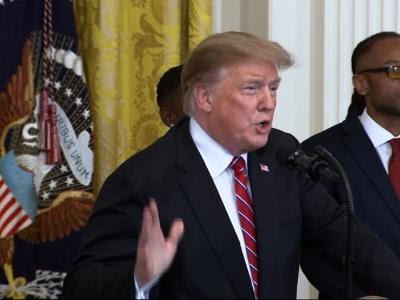
U.S. hiring was surprisingly solid last month as employers added 128,000 jobs despite a General Motors strike that held down overall payrolls and the loss of 20,000 temporary census workers. The showing highlights a healthy economy that eases recession concerns.
Economists surveyed by Bloomberg expected 85,000 job gains.
The unemployment rate, which is calculated from a different survey, rose from a 50-year low of 3.5% to 3.6%, the Labor Department said Friday. That’s because a strong increase in employment was offset by an even bigger rise in the labor force, which includes Americans working and looking for jobs.
Even more encouraging: Job gains for August and September were revised up by 95,000. August’s additions were bumped from 168,000 to 219,000 and September’s from 136,000 180,000.
The six-week GM strike reduced employment by 42,000, Labor said. That’s a blip that’s likely to boost November payrolls since striking workers will be back on the job, Morgan Stanley said before the report was released.
And the number of workers preparing for the 2020 census fell by 20,000.
Other transitory crosscurrents, however, also could have distorted the figures. October rebounds in employment after hurricanes in 2017 and 2018 may have skewed Labor’s seasonal adjustment of the raw numbers, further tempering the job gains, Goldman Sachs said.
Meanwhile, the scarcity of available workers caused by historically low unemployment could have prompted companies to bring on holiday staffers early, Goldman said.
More generally, average monthly job growth has slowed to about 167,000 this year from 223,000 in 2018, though the latter figure is expected to be revised down. The drop can be partly traced to the tight labor market that’s making it tougher for firms to find qualified workers.
The other culprit is the economy, which is slowing now that the effects of the federal tax cuts and spending increases spearheaded by President Trump are fading. Also, Trump’s trade war with China and a sluggish overseas economy have hammered manufacturing and business investment.
Consumers have stepped in to do the heavy lifting, with the Commerce Department reporting this week that the economy grew a better than expected 1.9% in the third quarter. But many analysts worry that household consumption, which makes up about 70% of economic activity, could taper off late this year, further hampering growth.
The Federal Reserve cut its key interest rate Wednesday for the third time this year to head off a potential recession but signaled that likely would be its last move unless the economy and labor market worsen noticeably.
(snip)
Industries that are hiring
Businesses added 131,000 jobs while federal, state and local governments lost 3,000.
Leisure and hospitality led the job gains with 61,000. Health care added 34,000; professional and business services, 22,000; and financial firms, 16,000.
Retailers, which are going through a shakeout because of a shift to online shopping, added 6,000 jobs.
Manufacturers lost 36,000, indicating the sector would have gained 6,000 jobs despite the trade war and global weakness if not for the 42,000 drop tied to the GM strike.
Labor force participation at 6-year high
The share of Americans working or looking for jobs rose from 63.2% to 63.3%, highest level since August 2013. The rate had been trending down as baby boomers retire but generally has held steady the past six years as that shift is offset by an improving labor market that has drawn in people with disabilities, less education and others.
Black unemployment hits record low
The jobless rate for African Americans fell from 5.5% to 5.4%, the lowest on record dating to 1972. The healthy job market is similarly boosting the fortunes of black people and other groups that have struggled.
What it means
This was a very strong report that would have tallied about 190,000 additional jobs if not for the effects of the GM strike and the layoff of temporary census workers. And payroll gains for the prior two months were revised up by a robust 95,000.
Economists said the performance reinforces the Fed’s plans to stay on hold after cutting interest rates three times in recent months.
“Looking at the resilience of the labor market, the (Fed) should be comfortable with sitting on the sidelines,” says economist Leslie Preston of TD Economics.
*see full story by USA Today